Looking for a muse? Check no further. Discover the Best of Art, Culture, History & Beyond!
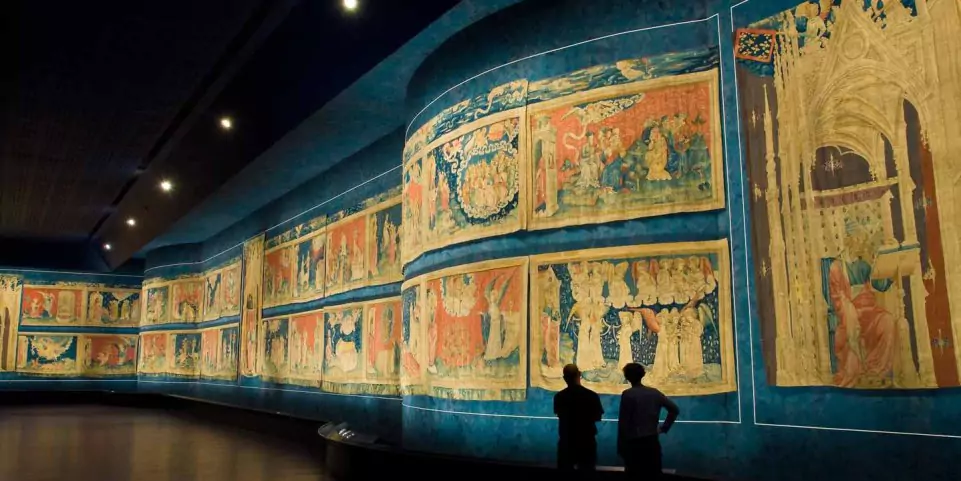
In the Chateau d’Angers in Angers, France, hangs one of the world’s oldest vestiges of medieval woven art: the Apocalypse Tapestry. Commissioned in 1373 CE, by Louis I of Anjou, this staggering masterpiece is the longest wall hanging ever to be woven in Europe with a length of 140m and surface of 850 square metres. The work was completed in a mere seven years. The concept of the Apocalypse was très à la mode in Europe during the middle ages and practically inescapable, what with the black plague having recently terrorized the lives of so many. In a period when basic health was so very endangered, death and dying became even more normalized in everyday life. Religious motifs rooted in the battle between Heaven and Hell gained even more prevalence – and gave hope to those waiting out a time of incessant death and suffering.
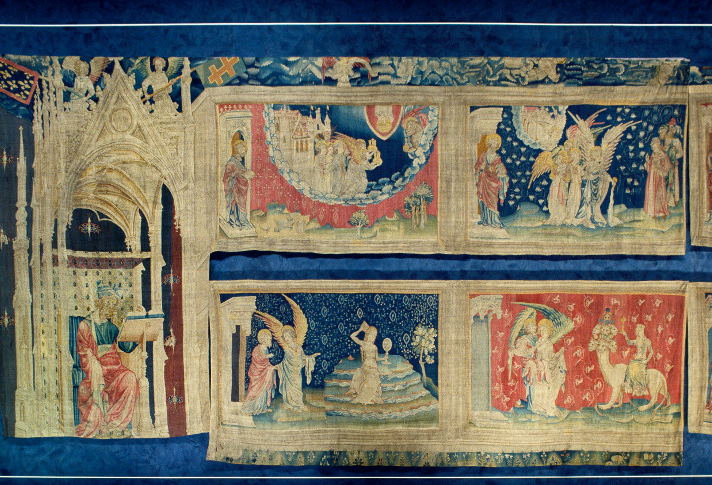
© Antoine Ruais / National Monuments Center
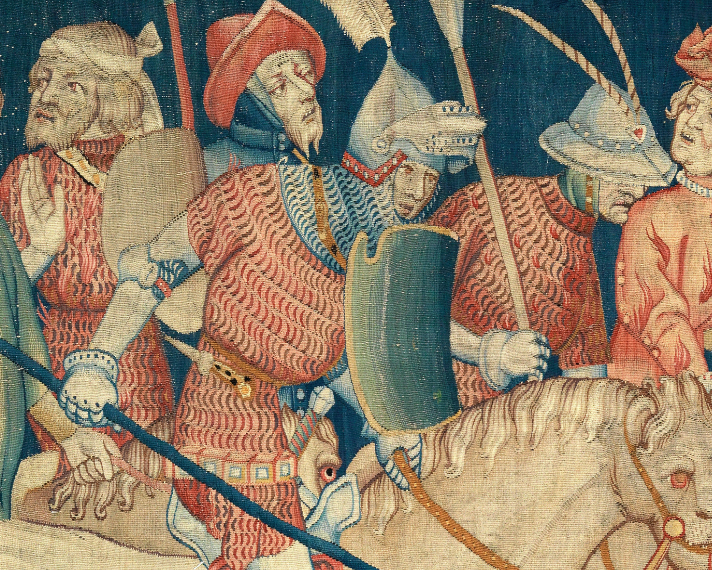
There were originally 90 panels within the tapestry (71 of them have survived) and each tells its part of the story of the Apocalypse (from the Book of Revelation by Saint John the Divine). The tale is divided in six parts, beginning with the rebirth of Christ and his ensuing triumph over the Apocalypse. As a whole, the work is an awesome testament to the influence of religion, war and death in the middle ages; seven-headed dragons meet the spears of the holy, while a figure of Death parades on horseback. One memorable scene shows a pile-up of demons as they are assailed, almost nonchalantly, by the heavenly powers of doves and angels.

© Antoine Ruais / National Monuments Center
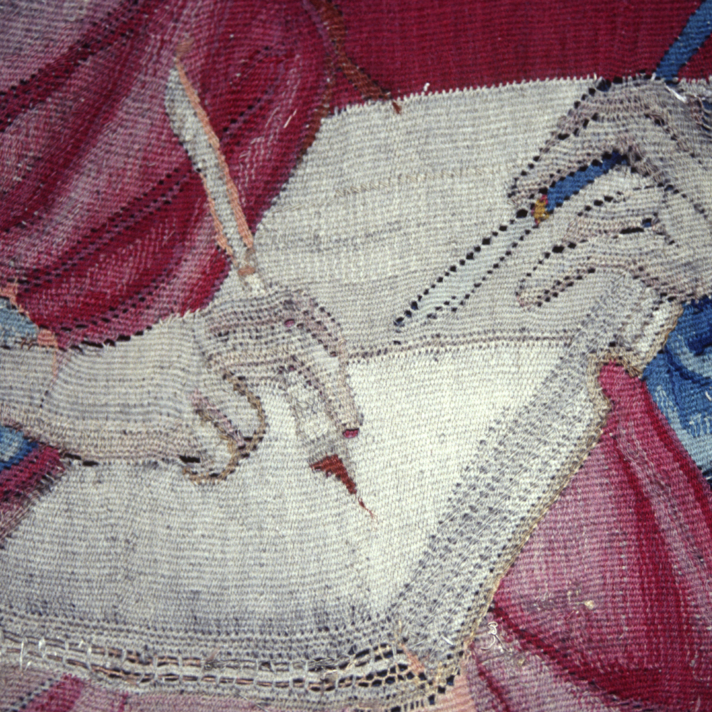
© Antoine Ruais / National Monuments Center
The design for the Apocalypse Tapestry was created by Hennequin de Bruges, a Flemish painter of the Bruges School. De Bruges was a staple of the royal court in France, and employed by the King to create works of art that could demonstrate the powerful presence of France in the medieval world. Centuries later, the panels still retain their rich imagery and coloration. The power of Good and Heaven is overwhelmingly triumphant in the images – but scenes of Death and Loss lurk nonetheless in the background.
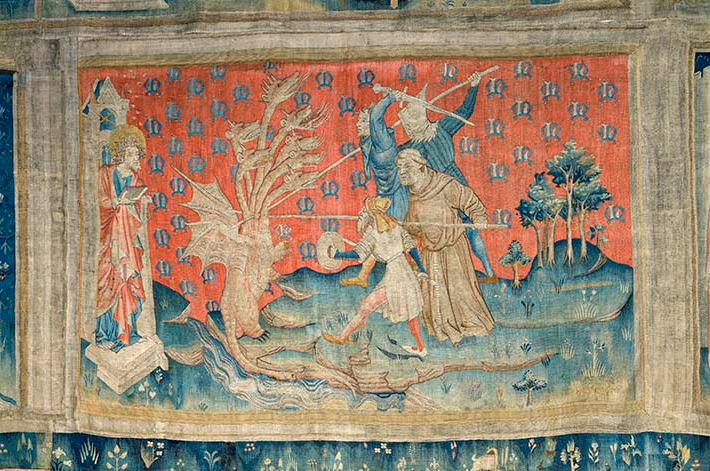
© Caroline Rose / National Monuments Center

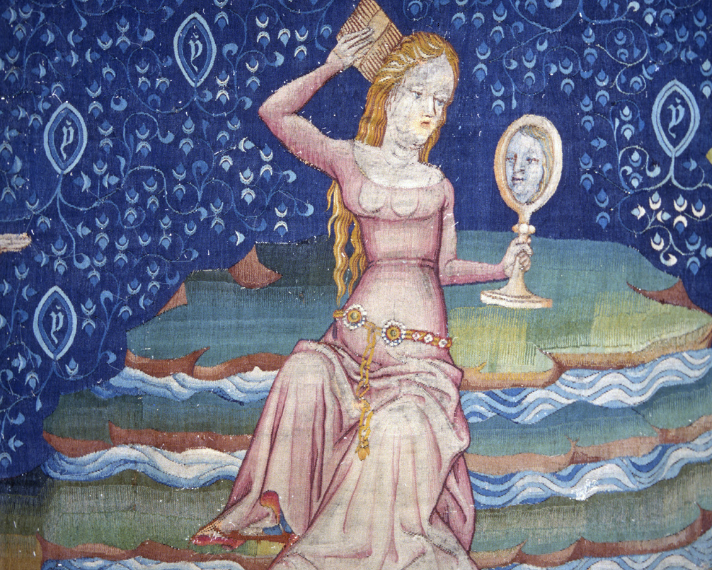
It is uncertain how Louis used the tapestry; it was probably intended to be displayed outside, supported by six wooden structures, possibly arranged so as to position the viewer near to the centre of the display, imitating a jousting field.
During the French Revolution the Apocalypse Tapestry was looted and cut up into pieces. The pieces of the tapestry were used for various purposes: as floor mats, to protect local orange trees from frost, to shore up holes in buildings, and to insulate horse stables.
During the Revolution many medieval tapestries were destroyed, both through neglect and through being melted down to recover the gold and silver used in their designs. That did not apply in this case, as the tapestries were in wool only.
The surviving fragments were rediscovered in 1848 and preserved, first kept in Angers Cathedral, but then moved to neighboring Chateau d’Angers.

This article is published on ArtAddict Galleria, where we explore the intersections of art, history, and culture. Stay tuned for more insights and discoveries!
